How to incorporate indoor plants into any design style
Indoor plants are versatile design elements that can enhance any interior style. They add a touch of color, movement, and energy, bringing the outdoor element of your aesthetic indoors.
No matter what design style you’re working with—industrial, farmhouse, modern, or something more eclectic—plants seamlessly tie the room together.
Selecting the right plant is the key to elevating and completing your interior design. This article will guide you through choosing the perfect plants to complement and enhance popular aesthetics, making your home stylish and vibrant while leaving you brimming with ideas.
Why plants are so effective
When you’re designing a space with a particular style in mind, you’re usually focused on color, furniture, and art. However, the simple addition of an indoor plant can instantly pull any design together.
Greenery is often overlooked, but it’s an incredible tool for
- Adding texture
- Providing a focal point
- Enhancing color
- Bringing movement
Beyond its design benefits, indoor plants can help boost your mood, deal with humidity, and even act as a natural air filter. Self-watering solutions from easyplant makes incorporating plants into your home both practical and stylish, ensuring your greenery stays fresh and vibrant with minimal upkeep.
The self-watering solution
One of the most practical and stylish ways to incorporate plants into your home is by choosing self-watering plants. These plants, like those offered by easyplant, make plant care hassle-free, ensuring your greenery stays fresh and vibrant with minimal upkeep. This feature is especially beneficial for those who may not have a green thumb or much time to spare.
Indoor plants for every design aesthetic
If you’re going to curate everything in a space to fit a specific design aesthetic, your indoor plants should be no different. Here are some of the most popular design styles and tips on choosing plants that complement them using easyplant’s stylish pots and self-watering system to maintain a beautiful and effortless interior.
Modern
In interior design, modern refers to the style that came about at the dawn of the 20th century. It focuses on simplicity. Mast elements are more concerned with functionality than anything else.
You can tell a modern design by its
- Neutral colors
- Practicality
- Simple, clean lines
- Natural light
- Geometrical patterns
Modern spaces aren’t too busy or cluttered, and every element has a reason for being there.
Plants in this space should be compact and clean. Look for long, slim leaves that don’t take up too much room, and foliage that is concentrated toward the top.
The Fiddle Leaf Fig (Ficus lyrata) is perfect for modern settings, especially in neutral easyplant pots that keep your color story consistent.
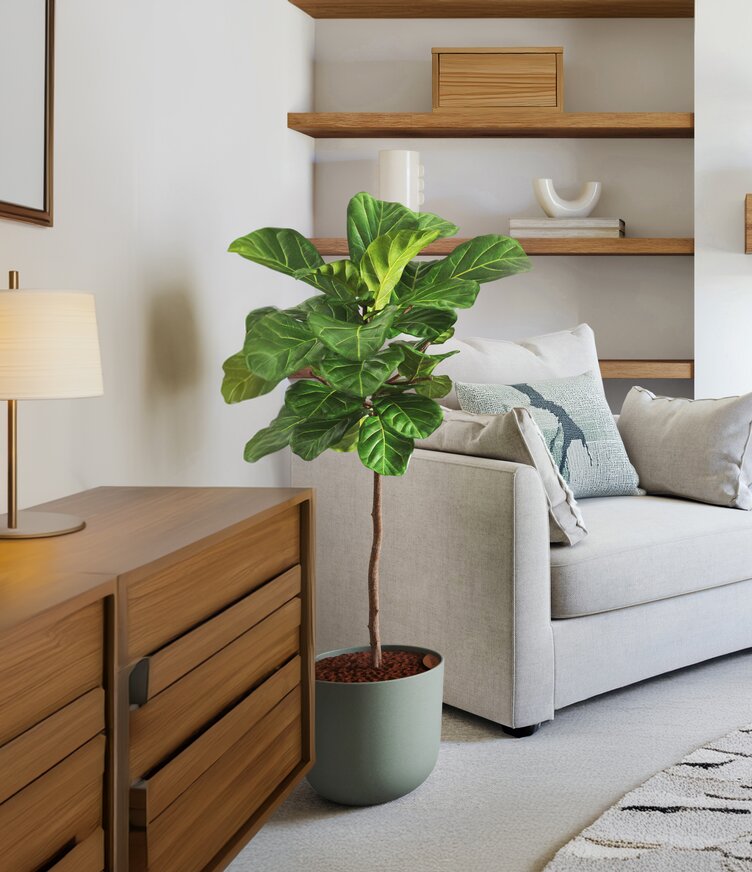
Industrial
The industrial style takes inspiration from old factories and industrial spaces that have been converted into lofts and living spaces. It’s an edgy, raw style with a strong emphasis on bold architectural elements.
You'll find a lot of
- Exposed brick walls and ductwork
- Metal and wood materials
- Neutral tones with darker accents (grays, blacks, browns)
- Open floor plans
- Vintage or reclaimed furniture
Industrial spaces often combine the ruggedness of unfinished textures with modern touches to create a unique and functional aesthetic.
Your indoor plants need to feel rugged and utilitarian. The Black ZZ Plant (Zamioculcas zamiifolia), combined with metallic or stone-colored easyplant pots, fits perfectly.
Succulents and cacti in these pots can also add to the industrial vibe with their unique forms.
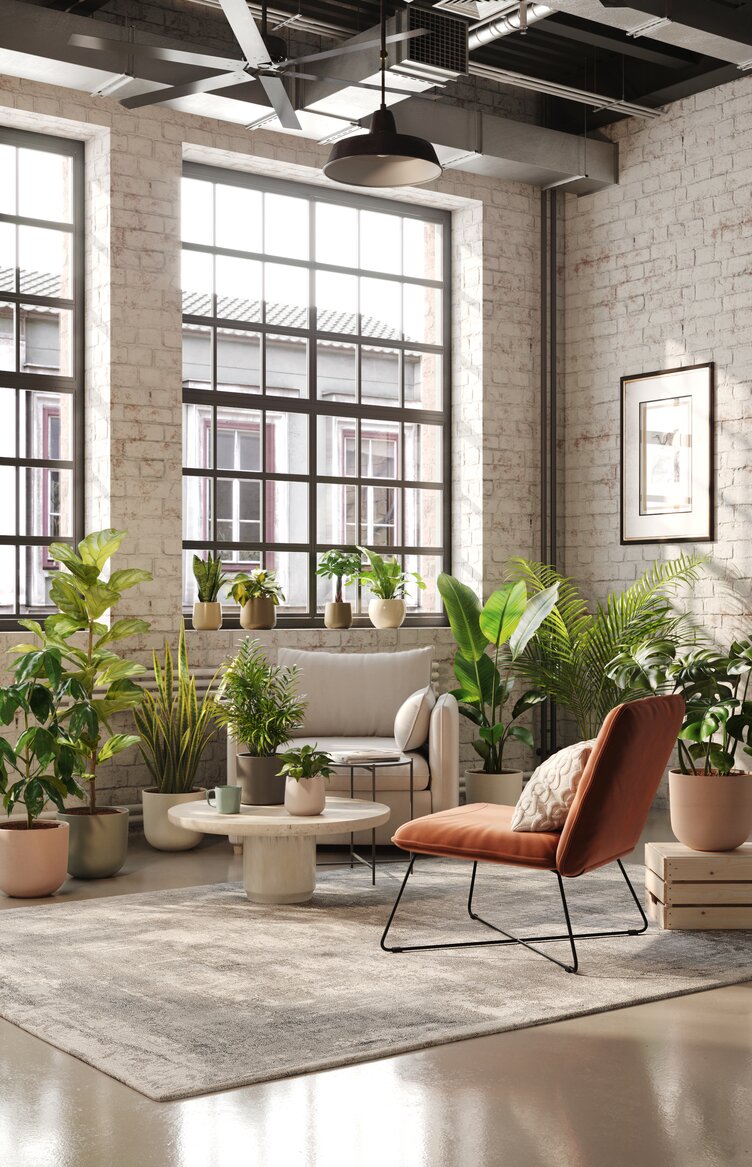
Bohemian
If you're after a carefree, eclectic style that combines vibrant colors, diverse textures, and a global influence, Bohemian is perfect. It’s characterized by a laid-back vibe and a mix of patterns and cultural artifacts.
This includes
- Rich, vivid colors (jewel tones, earthy hues)
- Layered textiles (rugs, throws, cushions)
- A mix of vintage and artisan pieces
- An abundance of plants
- Decorative, often globally inspired accessories
Bohemian spaces are meant to feel personal and spirited, with each item telling a story or holding particular significance.
You’ll be looking for lush, vibrant, almost whimsical plants to compliment this design style. Mix and match several types of plants with natural bamboo or walnut stands, and natural-colored stone pots. Leaves should be full and flowing, taking up space and moving freely.
A plant that beautifully encompasses this aesthetic is the Anthurium Lilli (Anthurium andraeanum). With its heart-shaped flowers that gracefully bloom and delicate light green leaves, it’s the perfect embodiment of the bohemian lifestyle.
This style is also great for hanging plants, you can even add some macrame holders to tie everything together.
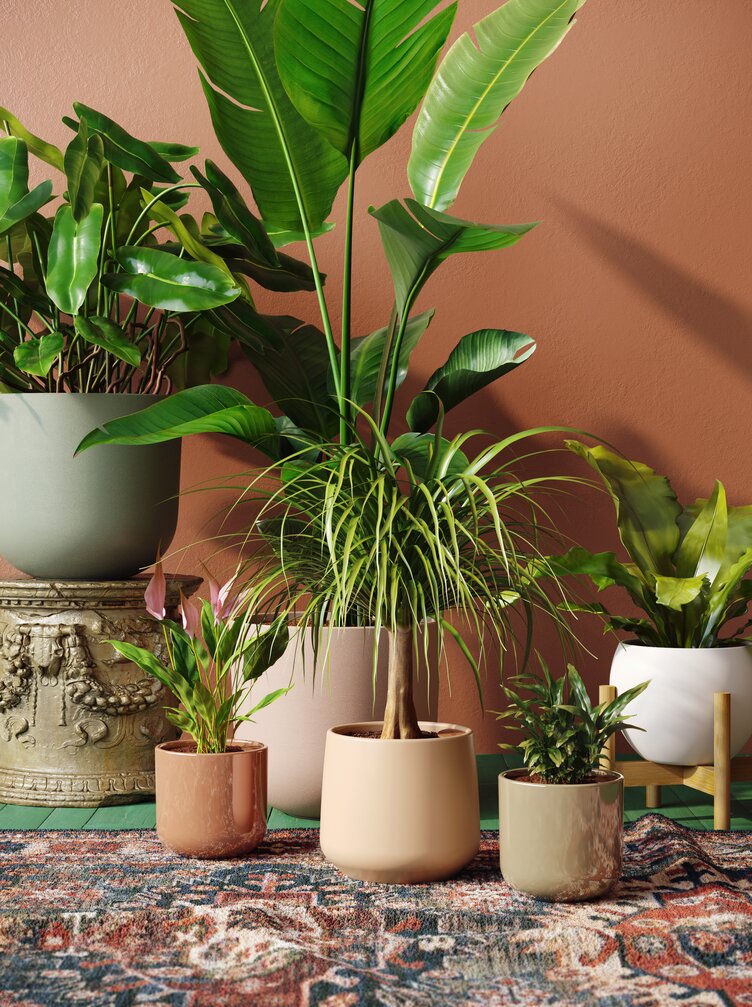
Farmhouse
The farmhouse style emphasizes comfort, practicality, and a warm, homey feeling. It strives to be reminiscent of rural farm life. Combining traditional elements with a modern twist helps create a space that feels lived-in and welcoming.
Look for
- Natural materials (wood, stone)
- Neutral and earthy color palette
- Vintage and rustic furniture
- Shiplap walls and barn doors
- Open shelving and apron sinks
- Colors that remind you of Spring and harvest
Farmhouse spaces feel cozy and inviting, with a focus on comfort and simplicity.
For this style, opt for plants that feel rustic and farmhouse-inspired. Look for plants with large, broad leaves and easyplant pots made from natural materials like stone, with pastel colors such as pinks and yellows to remind you of a country sunset.
The Anthurium Lilli (Anthurium andraeanum) is perfect for the farmhouse look. With its long-lasting blooms and tender heartwarming pink flowers, this plant gives you the springtime harvest feel throughout the year.
Herbs and fragrant plants like lavender or rosemary can also add a cozy touch to your farmhouse space.
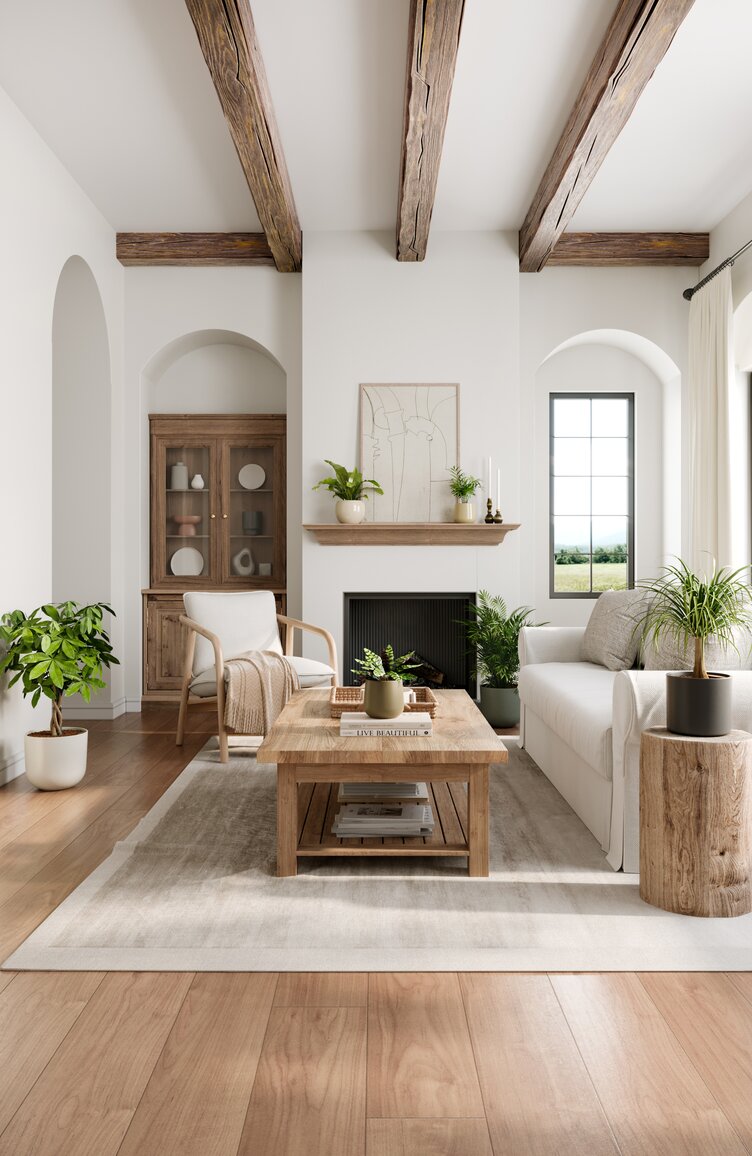
Costal
To capture the relaxed, breezy vibe of life by the sea, coastal design uses light, airy spaces.
- This style is full of
- Light, airy colors (blues, whites, soft neutrals)
- Natural materials (wood, rattan, wicker)
- Nautical and beach-themed decor
- Ample natural light and large windows
- Simple, comfortable furniture
Think back on your trips to the ocean and remember the bright green fern fronds that adorn the coastline or palms swaying in the breeze. This is precisely the feeling you’ll want to evoke in your home.
Plants such as the Medium Indoor Birds Nest (Asplenium nidus) bring that splash of tropical feel to your living spaces. Combine them with images of tropical birds or sailing ships, and you’ll practically feel the sea breeze every time you walk into the room.
You may also choose white or easyplant self-watering pots and incorporate shells or other beachy elements into the decor.
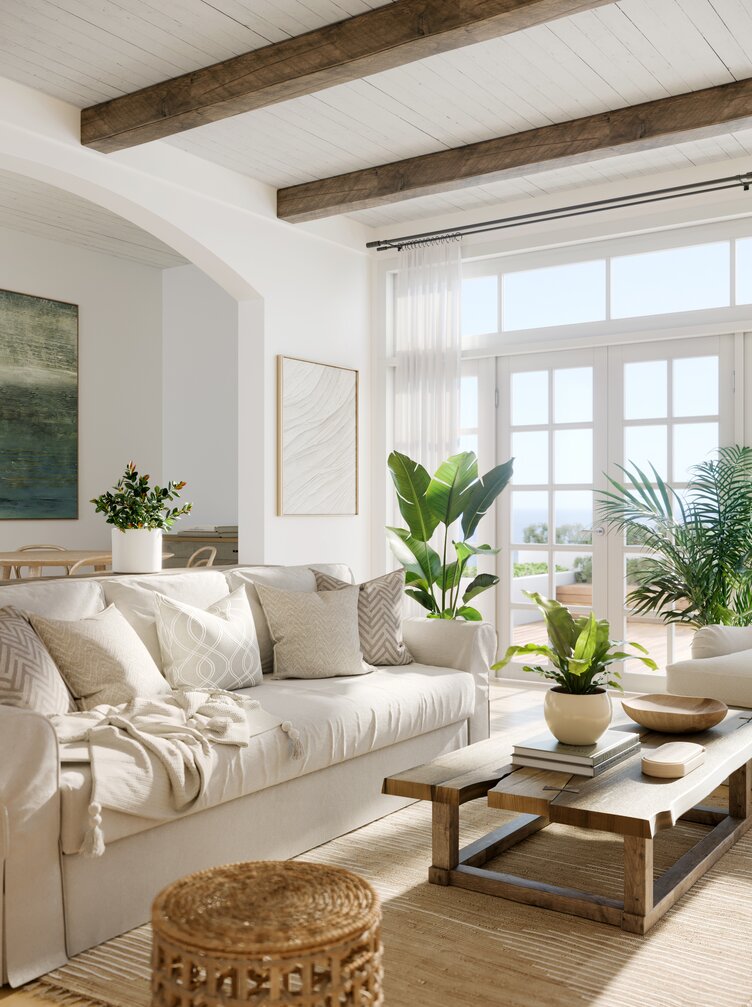
Maximalist
While maximalism can be seen as “more is more”, there is always a method behind what’s added. Emerging as a reaction against the sparse and functional modernist movements, maximalism is all about self-expression and excess. It prioritizes abundance, vibrancy, and eclectic combinations.
Maxamialism can look like a lot of different things, but you can’t go wrong with
- Bold and vibrant color palettes
- Layering of various textures and patterns
- Inclusion of diverse and often contrasting elements
- Rich, detailed decor with an emphasis on personal collections
- The almost curated sense of chaos with many items and styles coexisting
Maximalist spaces are visually stimulating and full of character, celebrating diversity and personal stories rather than adhering to a strict aesthetic formula.
Embrace bold, statement-making plants with large, colorful leaves and unique shapes.
Plants such as the Large Ficus Alii can be used to create the look of a small tropical tree inside your home.
They’re native to Southeast Asia and Tropical North Australia, and their trunks can be made into intricate shapes and designs that complement the maximalist aesthetic by providing vibrancy, expression, and an almost artistic value to your living and working spaces.
Use easyplant’s colorful pots to add visual interest and contrast, mixing various plants in different sizes, heights, and textures.
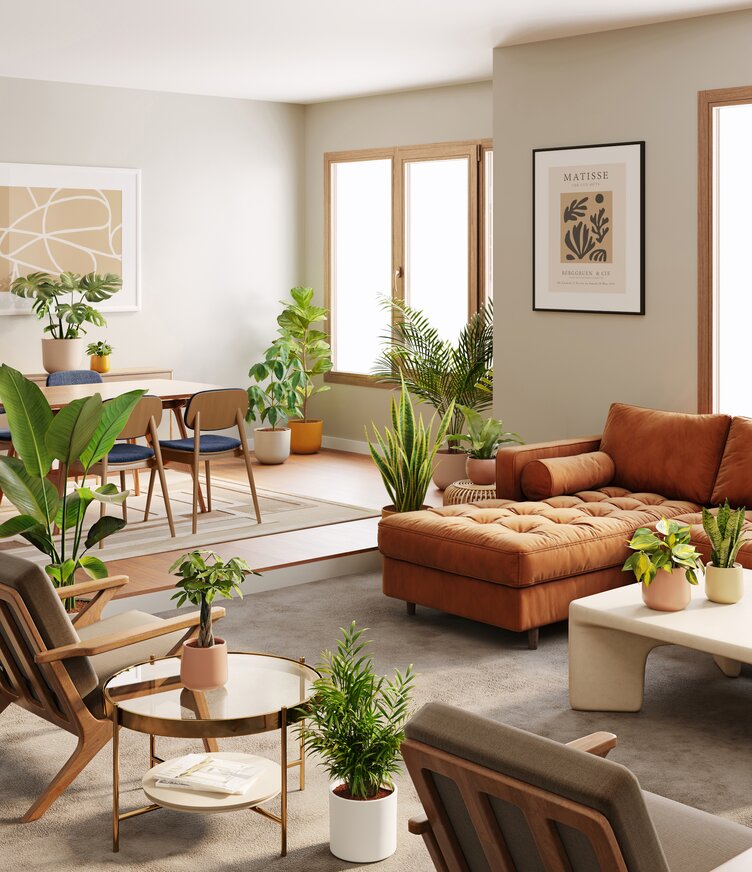
Choosing the perfect plant for your design
Indoor gardening is the cultivating and growing of indoor-friendly plants that can be enjoyed all year round. It’s stylish, fun, and adds a touch of nature to your home—but it does take some effort to get right.
No matter what style of plant you’re looking for, here are some master tips to ensure it stays fresh and beautiful.
Don’t overdo it
Most design styles benefit from carefully chosen elements, rather than an overwhelming cacophony. Rather than covering every surface with plants, take time to choose the one that will most complement your space.
This doesn’t mean you can only have one plant in your home. You simply need to think about where in each room the greenery will be most effective.
Size matters
While it can be exciting to see a plant grow over time, the ultimate goal of these home additions is to liven up your space. You might want to start with a larger plant that can instantly add visual weight to a room.
If you have tall ceilings, a plant will need to be significantly bigger to make an impact. However, you don’t want to overwhelm a small space with too much foliage. Think about the room you want to fill, and choose plants accordingly.
Conclusion
Incorporating plants into interior design is a great way to add a touch of nature and life to any space. By understanding which types of plants work best with different design styles and using easyplant’s self-watering system, you can add visual interest without lifting a finger.
Whether your style is modern, boho, or something in between, there's a perfect plant out there for you. Happy decorating!